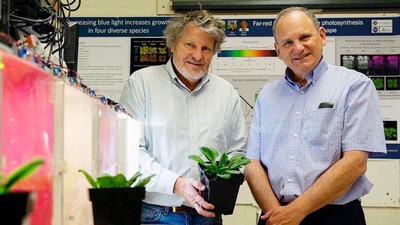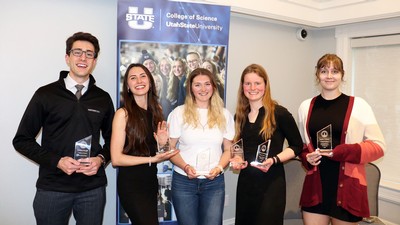Bio Engineering Faculty Awarded for Cutting-Edge Eye Health Research
Biological engineering assistant professor Elizabeth Vargis will receive a 2015 ORAU Ralph E. Powe Junior Faculty Enhancement Award.
More than six million Americans are affected by age-related macular degeneration and other retinal diseases, and despite the prevalence of these disorders, few methods of prevention and treatment exist today.
But at Utah State University, researchers are working to change that, delving into a new study that could unlock the secrets of diseases that manipulate normal cell function in the eyes.
Elizabeth Vargis, assistant professor of biological engineering, is among the 35 recipients of the 2015 Oak Ridge Associated Universities, or ORAU, Ralph E. Powe Junior Faculty Enhancement Award. ORAU announced the list of awardees May 20. The grants provide funding to enrich the research and professional growth of young faculty in their first two years of a tenure track position. Vargis will receive $5,000 from ORAU and a matching grant from USU. The funds will be used to purchase highly specialized cell growth tools that give Vargis and her research team precise control over in vitro cell cultures.
“The overall goal of this research is to develop in vitro models of eye disease,” she said. “And the way we’re doing this for retinal disease is by controlling where the cells grow.”
Unlike normal cell behavior, cells impacted by age-related macular degeneration start a domino sequence that causes neighboring cells to die. The size of the diseased areas, Vargis explains, can affect how powerful this chain reaction is. By controlling the exact size and location of her disease models, Vargis can evaluate cell behavior and possibly identify a method to reverse the disease or prevent its escalation.
“Results from this work will provide insight into the differences among normal cells, cells near small areas of degradation — which represents early stages of disease — and cells near larger areas of degradation — meaning late stages of disease,” she said.
Controlling the growth pattern of diseased cells, however, is complicated. It requires very small and highly specialized tools available only at Oakridge National Laboratory’s Center for Nanophase Materials Sciences. The grant provides funding for Vargis and a student to travel to ORNL to use equipment and collaborate with colleagues. Additional funding will cover the cost of supplies and student research wages.
Vargis said she’s honored at being chosen as a Ralph E. Powe recipient and excited about moving forward in this critical health sciences research.
“As an engineer, we have the tools and expertise to really change how biological and biomedical problems are solved,” she said. “I’m thrilled that we will be using our methods to better understand retinal disease.”
Related links:
USU Biological Engineering Department
Contact: Elizabeth Vargis, 435-797-0618, Elizabeth.vargis@usu.edu
Writer: Matt Jensen, 435-797-8170, matthew.jensen@usu.edu
The award will support Dr. Vargis's cutting-edge research into retinal diseases.
TOPICS
Awards 701stories Disease 51storiesComments and questions regarding this article may be directed to the contact person listed on this page.








